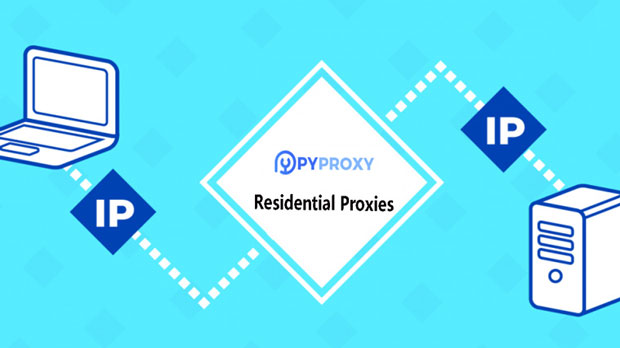Using free socks5 proxies to bypass geo-restrictions has become a popular method for internet users seeking access to region-locked content. This technique allows users to mask their actual IP address with one from a different location, in this case, from the United States, granting them access to websites, streaming services, and online platforms that might otherwise be unavailable in their region. This article provides a detailed analysis of how to effectively use free US SOCKS5 proxies to overcome geographical limitations, exploring the technology behind SOCKS5 proxies, the process of configuring them, and the potential challenges users might face. Understanding socks5 proxy TechnologyBefore diving into the process of using free US SOCKS5 proxies, it's essential to understand what SOCKS5 proxies are and how they function. SOCKS5 is a type of internet protocol used to route network packets between a client and a server. Unlike HTTP proxies, which only handle web traffic, SOCKS5 is versatile, supporting a variety of protocols such as HTTP, FTP, and even torrent traffic. It works by masking the user’s IP address with the proxy server’s IP, making it appear as though the user is browsing from the server’s location.SOCKS5 proxies are especially useful when it comes to bypassing geo-restrictions. By using a proxy server located in the United States, for example, users can access content that is only available to US-based users, including streaming services like Netflix, Hulu, or sports events that are geographically restricted.How to Use a Free US SOCKS5 Proxy to Bypass Geo-RestrictionsTo successfully bypass geo-restrictions using a free socks5 proxy, there are several steps you need to follow. This process typically involves finding a reliable SOCKS5 proxy service, configuring it on your device, and testing its effectiveness in accessing geo-blocked content.Step 1: Finding a Free US SOCKS5 ProxyThe first step is to find a free SOCKS5 proxy located in the United States. While there are many free proxy services available online, it’s crucial to be cautious about which ones you choose. Free proxies may not always be secure, reliable, or fast enough for streaming or other bandwidth-intensive activities.One important factor when selecting a proxy is its reliability. Free SOCKS5 proxies often come with limitations such as slower speeds, limited availability, or frequent downtime. Some might also have security issues that could expose your data to potential risks. Therefore, always consider user reviews and ratings to gauge the proxy's performance.Step 2: Configuring Your Device to Use the SOCKS5 ProxyOnce you have found a free US SOCKS5 proxy, you need to configure it on your device. This process can vary depending on the operating system or the software you're using, but the general steps are relatively simple.1. Access Proxy Settings: In most cases, you will need to access your device’s internet or network settings. For Windows, this can be done through the Control Panel under Network and Sharing Center, while macOS users can find proxy settings under System Preferences > Network. 2. Enter Proxy Details: Once you're in the appropriate settings menu, you will need to enter the SOCKS5 proxy details. This will typically include the proxy server's IP address, the port number, and any authentication information if required.3. Test the Proxy Configuration: After configuring the proxy settings, it's important to test if the proxy is working as expected. You can visit websites like “pyproxy.com” to check if your IP address has changed to the location of the SOCKS5 server.Step 3: Testing Geo-Restriction AccessAfter successfully configuring the SOCKS5 proxy, the next step is to test whether you can access geo-restricted content. This is especially important for streaming services or websites that might block users based on their geographic location.To check if the proxy is working, try accessing a site or service that is known to have geo-restrictions. For example, if you're trying to access US-based Netflix content from abroad, simply visit the site and log in. If the proxy is working correctly, you should be able to see US-based content without any issues.Potential Challenges of Using Free US SOCKS5 ProxiesWhile using free US SOCKS5 proxies can be a convenient and cost-effective way to bypass geo-restrictions, it’s important to be aware of several challenges that may arise during use.1. Speed and Reliability IssuesFree SOCKS5 proxies often come with significant performance limitations. Many free proxy services suffer from slow speeds and high latency due to the large number of users accessing the same proxy server. This can make streaming or even browsing slower and less enjoyable. Additionally, free proxies may have downtime or inconsistent performance, which can disrupt your ability to access geo-restricted content.2. Security ConcernsUsing free proxies, especially from unknown sources, can pose security risks. Some proxies may log your activity, potentially exposing your personal information or internet usage patterns. Additionally, free proxies may not encrypt your traffic, leaving your online activity vulnerable to interception. This is particularly concerning when handling sensitive information such as passwords or financial details.3. Blocked Proxy ServersMany websites and services are aware of the widespread use of proxies to bypass geo-restrictions and have implemented measures to block traffic coming from known proxy servers. As a result, even a well-configured SOCKS5 proxy might be blocked by the site you're trying to access, rendering it ineffective for bypassing restrictions.Alternative Solutions and Best PracticesIf you find that free SOCKS5 proxies are not meeting your needs, there are several alternatives you can explore. Paid VPN services, for example, provide more reliable and secure connections with faster speeds and better protection against data leakage. These services often offer servers in the United States and other countries, allowing you to bypass geo-restrictions without encountering the limitations of free proxies.Additionally, it’s essential to practice caution when using proxies. Ensure that you’re not accessing sensitive accounts or conducting important activities through a free proxy, as the security risks can outweigh the benefits. Always use secure connections and consider using encrypted tunnels, such as VPNs, for added protection.ConclusionUsing free US SOCKS5 proxies can be a useful method for bypassing geo-restrictions, but it comes with its own set of challenges. While this technique allows users to access content that might be unavailable in their region, issues related to speed, security, and reliability can diminish its effectiveness. By understanding the technology behind SOCKS5 proxies, properly configuring them, and testing their functionality, you can maximize the chances of success. However, for long-term use or more secure browsing, paid alternatives like VPNs may offer a better solution. Always weigh the pros and cons of free proxies and stay informed about the risks to ensure a smooth and secure online experience.
Dec 27, 2024
![arrow]()



















































